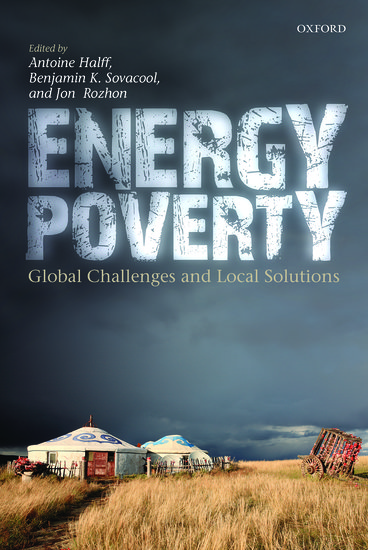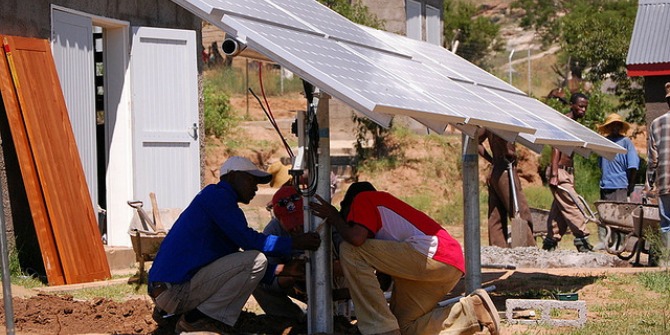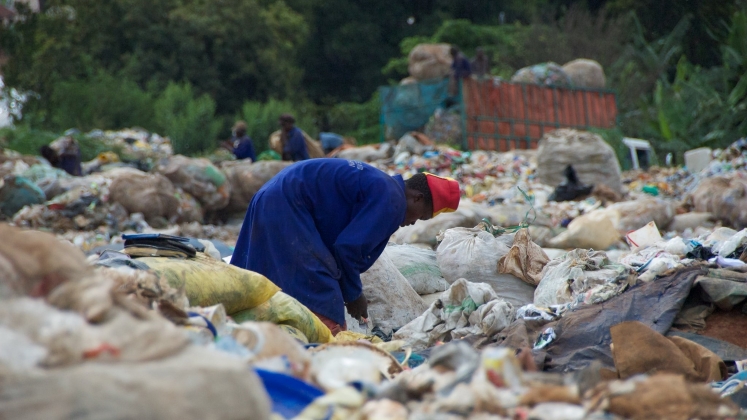With chapters on energy poverty and public health, the World Bank’s perspective on energy access, and the scale of investment required for universal energy access, the book is ideal reading for students of development and government, writes Amelia Sharman.
 Energy Poverty: Global Challenges and Local Solutions. Antoine Halff, Benjamin K. Sovacool, and Jon Rozhon. Oxford University Press. 2014.
Energy Poverty: Global Challenges and Local Solutions. Antoine Halff, Benjamin K. Sovacool, and Jon Rozhon. Oxford University Press. 2014.
What are the fundamental components to include in a definition of poverty? And more importantly, how do you go about addressing the problem? Energy Poverty makes a compelling and data-driven case for understanding and prioritising energy poverty – not just income poverty – as a fundamental development issue. It also reflects the increasing global attention being paid to energy poverty given the growing awareness that ‘anybody with experience on the ground knows that development efforts cannot succeed without a robust energy component’ (p.23).
The large 459 page compendium is divided into three parts. The first, “Taking Stock of Energy Poverty”, includes innumerable facts and figures quantifying the scale of the problem, speaking to the mantra of ‘you manage what you measure’, and which will do the most to cement the volume’s usefulness as a reference source.
Asia is the biggest loser in terms of energy access overall, with more than 1.8 billion people without access to clean cooking facilities as compared to 700 million in sub-Saharan Africa. And approximately 628 million people in Asia are without electricity as compared to 589 million in sub-Saharan Africa. The importance of not conflating the sub-issue of electricity access with energy poverty overall is also clearly portrayed by the statistic that while China has only 4 million without access to electricity nearly 400 million people do not have access to clean cooking facilities.
A key message that jumps out from this section is the relationship between energy access and the development or worsening of social inequality. For example, in Uganda, the difference between the poorest and richest quintiles is 60% in terms of income spent on energy services – a cruel irony that the poor consume ‘less energy than other strata of households, but spend more of their income on it’ (p.25). Heartening in this regard however is the recognition that the drive for large-scale grid development is no longer seen as the ultimate one-size-fits-all solution. Out of a total estimated global electrification requirement of 838 TWh, 56% is expected to be provided in the future from mini-grid and isolated off-grid technology.
What was also particularly interesting in this section was the information around the usefulness or otherwise of different cook-stove initiatives (showing a clear recognition that learning from failures as well as successes is critical), as well as reference to a compelling theory about cooking, creating and perpetuating a patriarchal social system due to the inextricable link between sex and economics in human society.

The second part, “Lessons Learned”, provides seven case studies of energy poverty, including Brazil, India and China, as well as sub-Saharan Africa and the Middle East. While several chapters read somewhat as propaganda for energy policies of incumbent governments, or aim to reinforce global political claims (such as the chapter which emphasises China’s continued categorisation as a developing country, and which fails to mention the devastating impact of the country’s energy programme in terms of its contribution to air quality), others are more critical in their assessments. For example, Debajit Palit and co-authors note the lack of electrification at the household level in India reflects the fact that ‘historically the level of electrification has been measured as a percentage of electrified villages (and not as a percentage of electrified households) with grid extension to any point within the revenue boundary of a village, irrespective of whether any household is getting connected or not’ (p. 239).
The key benefit of this section however is in terms of the policy learning opportunities it provides, particularly the specifics of project outcomes. From the Brazilian success story to the highly variable experiences of the MENA (Middle East and North Africa) region countries there is a wealth of information available, particularly for policy audiences. Examples show that even small changes can have a big impact. In Senegal, the shift from 12kg to 2.75kg LPG bottles revolutionised the uptake of LPG as a cooking fuel, as initial prices were lower and cook stoves were better adapted to household use.
In the final part of the book, “Challenges and Policy Options” presents a series of somewhat unconnected chapters loosely hung together by the notion of ‘policy options’. That economic growth from foreign (often private) investment and trade is regarded as the solution to development concerns is unsurprisingly emphasised in the chapter describing the United States’ approaches to alleviating energy poverty (and also appears with frequency in many other places throughout the book, such as other chapters authored by those with links to the large development banks). The remaining chapters mostly provide examples of large-scale initiatives and specific projects that are likely to be of interest to those seeking more practical advice or case study examples, such as rural energy development in Nepal, or the joint International Finance Corporation-World Bank ‘Lighting Africa’ programme, aiming to provide modern off-grid lighting products to 250 million people in Africa by 2030.
A notable failure of this otherwise impressive collection however is the inadequate attention it pays to the environmental consequences of reducing energy poverty. There is little to no discussion of how adequate space is to be achieved within an overall global carbon budget to allow for developing countries to increase per capita consumption—if every individual living on the planet had the same CO2 emissions per capita as a US citizen, our current rate of speed towards a 2°C warmer world would look like that of a snail compared to a racing car.
While the equity considerations in terms of providing energy access to the ultra-poor and others in the developing world are (understandably) heavily emphasised, that there will very likely still be inequitable access even once basic access is achieved is also rarely mentioned. While this may seem like a picky grumble given the overwhelming scale of achieving basic access, ideas of burden sharing and fairness are still critical to consider.
In chapter 2, manuscript co-editor Benjamin Sovacool claims that global ‘energy access won’t trash the planet’ (p. 42). However, given current energy supply trends (particularly the continued use of fossil fuels), it is a stretch to fully believe that this increased access will be universally ‘more efficient and less polluting’ (p.42). While reducing energy consumption in the developed world is not the focus of the book, the inextricable link between energy and climate change does mean its absence is somewhat glaring.
Nonetheless, this should not detract too significantly from the usefulness of this book as a reference companion for anyone interested in energy poverty, particularly in terms of its vast array of statistics and policy lessons across a multitude of case studies.
Amelia Sharman is a PhD student at the Grantham Research Institute on Climate Change and the Environment at the LSE. Her main research interests are in the relationship between science and policy, and uncertainty and controversy in political decision-making. Previously, Amelia was a Sustainability Specialist at the International Hydropower Association and a Senior Policy Advisor at the New Zealand Ministry for Economic Development. Read more reviews by Amelia.







